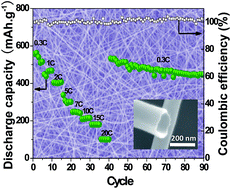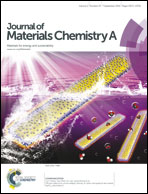Hollow carbon nanofiber as a stabilizer for in situ TiO2/VO2 co-impregnation with high rate performance and ultra-long cycling life as lithium-ion battery anode†
Abstract
TiO2 and VO2 were first co-impregnated in the shell of electrospun hollow carbon nanofibers. The hierarchical porous structure enabled fast electron transfer and electrolyte penetration, resulting in high power rate and ultra-long cycling life, which makes the structure a promising anode for lithium ion batteries.


 Please wait while we load your content...
Please wait while we load your content...